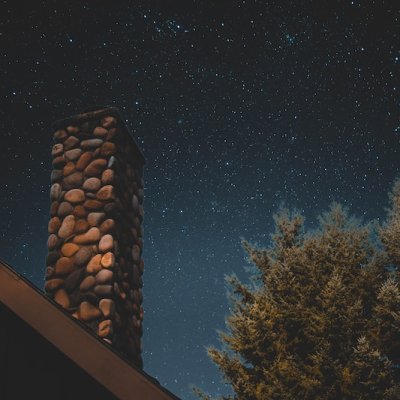- Examples
Con Abderramán III se convirtió en sede del almirantazgo califa. | With Rahman III it became the caliphate of almirantazgo. |
El primer promotor de la construcción es Abderramán I entre los años 784 y 833. | The first developer of the edifice was Abderramán I, between the years 784 and 833. |
Cuenta con una cruz bajo la cual se encuentra la estatua de Abderramán I. | There is situated a cross, beneath which there is the statue of Abderraman I. |
Derrotado el ejército de Ramiro I por Abderramán II, se retira al próximo collado de Clavijo. | Defeated the army of Ramiro I for Abderramán II, moves back to Clavijo's next hill. |
La Alcazaba, fundada por el Emir Abderramán III, es uno de los principales atractivos de la ciudad. | The Alcazaba, founded by Emir Abd-ar-Rahman III is one of the city's main attractions. |
Al no encontrar ninguno, Abderramán destinó ese dinero para construir un nuevo palacio en su honor. | Not finding any, Abd ar‐Rahman allocated that money to build a new Palace in his honour. |
Levantada en época musulmana bajo el mandato de Abderramán III, originariamente esta torre fue alminar. | Built under the rule of Abd al-Rahman III., the tower originally was a minaret. |
Descripción Una fortaleza amurallada de impresionante tamaño y belleza mandada a construir por Abderramán II en el año 835. | Description A walled fortress of impressive size and beauty commissioned by Abderramán II in the year 835. |
Llegó a ser primer puerto Al-Andalus y base naval del Califato de Córdoba en tiempos de Abderramán III. | It became first port Al-Andalus and naval base of El Califato de Córdoba during the times of Abderramán III. |
Murcia fue fundada en el año 825 por el emir de Al-Andalus Abderramán II quien le puso el nombre de Madina Mursiya. | Murcia was established in the year 825 by the emir of Al-Andalus Abderramán II who gave it the name of Madina Mursiya. |
Abderramán III decidió erigir la fortificación, que alberga hoy La Zuda (pozo), junto a cuatro espléndidos ventanales del gótico catalán. | Rahman III decided to build the fortress, that today houses the castle, together with four magnificent windows in Gothic Catalan style. |
Historia Se desconoce la fecha de la fundación de Nerja, pero según parece existió como villa en tiempos de Abderramán III. | Nerja's foundation date is unknown, but it seems that it existed as a town in the times of Aberramán III. |
Abderramán III decidió construir la fortificación que hoy acoge la Zuda (pozo) junto a cuatro espléndidos ventanales del gótico catalán. | Abderraman III decided to build a fort Acull the Suda (pou) of Catalan Gothic where today's stands this unique hotel. |
En el siglo IX los normandos atacan Sevilla causando importantes daños y es Abderramán II quien los expulsa y fortifica la ciudad. | In IX century Normans attacked Sevilla provoking important damages and is Abderramán II the one who expelled them and fortifies the city. |
Abderramán III decidió construir este castillo, que alberga hoy un hotel de 72 habitaciones, junto a 4 espléndidos ventanales del arte gótico catalán. | Abderramán III decided to build this fortification, which now houses the 72-room hotel, next to 4 splendid large Catalan Gothic windows. |
Su construcción, iniciada en el año 936, se debe al primer califa de Al-Andalus, Abderramán III, en honor a su favorita Al Zahra. | Its construction, which began in 936, was ordered by the first Caliph of Al-Andalus, Abderraman III, in honour of his favourite, Al Zahra. |
A estas luchas se suman los mozarabes, continuandose hasta el año 912, fecha en que Abderramán III asume el Califato de Córdoba, y combate estas reveliones. | The Mozarabic linked these struggles, until the year 912, when Abd al-Rahman III assumed the Caliphate of Córdoba, and combat these rebellions. |
La r esidencia del califa Abderramán III, el legado arquitectónico de Madinat al-Zahraes es el único que aún pervive las diversas residencias suntuosas de los Omeyas cordobeses. | The house of the caliph Abderramán III, the architectonic legacy of Madinat al-Zahraes is only that still pervive the diverse Cordovan sumptuous residences of the Omeyas. |
Abderramán III construyó la Puerta de Atarazanas (foto de arriba) en el siglo XIII (esta es la puerta de acceso al mercado central actualmente). | Abderramán III had the gate 'La Puerta de Atarazanas' (above photo) constructed in 13th Century (which is the access to the Central Market nowadays). |
Actualmente es uno de los templos más antiguos del mundo en uso continuo desde el siglo VIII aC, cuya construcción comenzó el Emir de Andalucía Abderramán I. | It is currently one of the oldest temples in the world of continued use since the eighth century AD, whose construction began the Emir of Andalusia Abderramán I. |
Random Word
Roll the dice and learn a new word now!
Want to Learn Spanish?
Spanish learning for everyone. For free.















